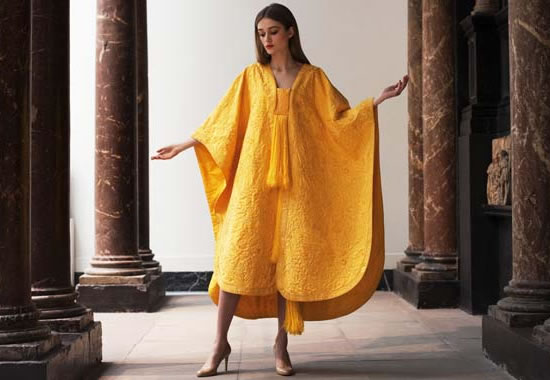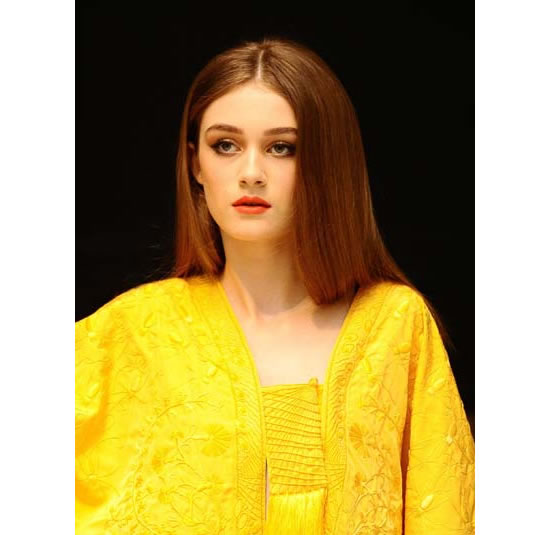Spider silk dream revived
A Gold silk cape made by millions of rare spiders
A hand-woven cape is being shown at London’s Victoria and Albert Museum alongside the Golden Spider Silk, a four-metre long piece of brocaded fabric. The garment is created from golden silk spun by more than a million spider.
Strands of silk from over one million of Madagascar’s golden orb spiders (Nephila madagascariensis) were woven together to make this dazzling textile, the only one of its kind in the world. This rare textile was created by Englishman Simon Peers and American Nicholas Godley.
“We were keen to show the spider silk textiles at the Victoria and Albert Museum, being the most appropriate place to premiere this work in Europe. The unique and historic costume and textile collections have been a constant source of inspiration over the years. As far as we know the Victoria and Albert Museum has never before shown anything made from spider silk, despite its diverse collections of art and decorative arts,” said Mr Peers.
The idea of harnessing spider silk for weaving is an age-old dream that was first attempted in a methodical way in France in the early 18th century. In the 1880s, Father Paul Camboué, a French Jesuit priest, brought the dream to Madagascar.
Intrigued by the strength and beauty of the silk produced by the island’s golden orb spider, he began to collect and experiment with it. In 1900 a set of bed hangings was woven from spider silk at Madagascar’s Ecole Professionelle and exhibited at the Exposition Universelle in Paris (today the whereabouts of those hangings are unknown). But the idea of creating an industry that could compete with Chinese silk (produced from silkworms) proved unrealistic.
In 2003 partners Simon Peers and Nicholas Godley, longtime residents of Madagascar, revived Spider silk. They assembled a team of over 80 women and men with local knowledge of spiders and weaving to work on the project. It took them five years—and a good deal of trial and error, invention, and perseverance—to gather the spider silk and weave this cloth in the elaborate textured patterns of a lamba akotifahana, a 19th-century luxury textile of Madagascar’s Merina people.
Spider silk has extraordinary properties. It is one of the strongest materials in the natural world and has remarkable elasticity. Scientists today are researching potential uses for spider silk in the medical and military arenas, including artificial tendons, surgical thread, and bulletproof clothing. However, attempts to replicate the complex processes that take place in a spider’s spinnerets in order to produce artificial spider silk are proving extremely difficult.
Watch a video the Golden Spider-Silk Textile at the Art Institute of Chicago.



